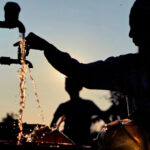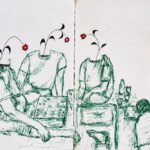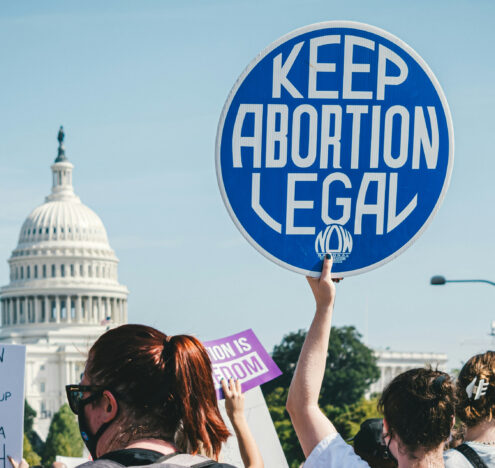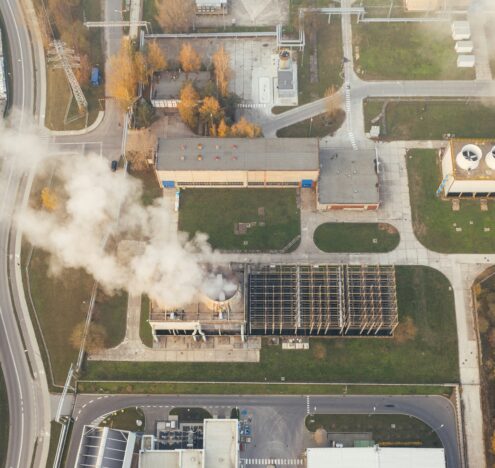Azerbaijan launched a large-scale offensive in blockaded Nagorno-Karabakh on Sept. 19, 2023. What Azerbaijan framed as an “anti-terrorist operation” was its final attempt to establish full and unconditional control over the contested territory at the heart of the Armenian-Azerbaijani conflict. The conflict over Nagorno-Karabakh or Artsakh, an Armenian-populated mountainous region placed within the jurisdiction of Soviet Azerbaijan in 1923 as an “autonomous oblast,” has resulted in three waves of wars and intense fighting over the last three decades. The ongoing conflict has resulted in tens of thousands of casualties, mass displacement, and ethnic hatred on a scale rarely seen in other flashpoints.
The conflict has been defined by a violent struggle between the right to self-determination of Armenians of Nagorno-Karabakh, who voted for independence in 1991 as the Soviet Union was collapsing, and the principle of territorial integrity according to which Azerbaijan claims full sovereignty and authority over the entire territory.
A fragile ceasefire was reached on Sept. 20, 2023, amid reports of war crimes and civilian casualties and as a result of an all-out military effort by Azerbaijan to dismantle the institutions of the local government. Facing a far superior military force, Nagorno-Karabakh agreed to disband the local armed units and start negotiations based on Azerbaijan’s agenda. The situation is evolving — but this was not a random attack.
As Armenians of Nagorno-Karabakh start to escape the mayhem in the region following the devastating military operation, it is important to note that Azerbaijan had prepared the grounds for a final attack months in advance. On Aug. 8, 2023, weeks before the offensive, Luis Moreno Ocampo, the former chief prosecutor of the International Criminal Court (ICC), issued a legal opinion and a dire warning that Armenians of Nagorno-Karabakh face genocide due to Azerbaijan’s blockade of the Lachin corridor, the only route linking the war-torn region to Armenia. Blockaded since December 2022 with no access to critical supplies, the 120,000 residents are trapped inside, facing starvation and a choice: leave or submit to Baku’s rule. On Sept.19, 2023, Azerbaijan, coordinating its actions with Russia and Turkey and neglecting the Western calls for a dialogue with the Armenian side, made the final step in forcing a “solution” to the conflict.
The Russian “peacekeepers” stationed in the region since 2020 to enforce the ceasefire have done nothing to resolve the situation and force Azerbaijan to comply with its obligations, prompting Armenia to seriously rethink its relationship with Russia. Armenia had hoped that the stationing of Russian forces would replace its previous role as the security guarantor of Nagorno-Karabakh’s Armenians. Azerbaijan’s attack and Moscow’s reaction and approval hint at a possible tacit agreement between now-allies Moscow and Baku that has given President Ilham Aliyev of Azerbaijan a carte blanche to pursue its policies without impediment. The Russian approval of Azerbaijan’s actions is set to deteriorate the Armenian-Russian relationship further, fueling the fire of the subtle reorientation of Armenia toward the West.
The Lachin corridor’s months-long blockade is a coercive tool in complex negotiations in which Aliyev seeks to seal off victory permanently. The blockade has received widespread international condemnation and several countries, including the United States and France, have called on Azerbaijan to immediately open the Lachin corridor and allow the International Committee of the Red Cross to resume its activities in Nagorno-Karabakh. But the diplomatic pressure has not produced any tangible results. During the Senate Committee on Foreign Relations hearing on Sept. 14, 2023, US Principal Deputy Assistant Secretary of State Yuri Kim stated that “the United States will not countenance any action or effort — short-term or long-term — to ethnically cleanse or commit other atrocities against the Armenian population of Nagorno-Karabakh.” Ironically, Azerbaijan launched its brutal offensive against Nagorno-Karabakh only days after Kim had assured the Senate that the United States would not tolerate ethnic cleansing by Azerbaijan.
Azerbaijan’s most recent full-scale offensive in the region is a hard-hitting reminder of the limits of toothless diplomacy and the trust Western mediators put in an aggressive autocrat’s pledge to stay the course on reaching a negotiated settlement. Baku’s determination to end the conflict in its own way, via force and a brutal campaign to force the remaining Armenians out of the region, not only threatens the fragile opportunity of achieving durable peace with Armenia but also carries the risk of a great human tragedy, as evidenced by the testimonies coming out of Karabakh.
A Different Kind of Conflict
I remember vividly when, in 2012, Hungary decided to extradite convicted military officer Ramil Safarov to Azerbaijan. I was a child, but I remember then-President Serzh Sargsyan’s press conference when he announced that Armenia was recalling its ambassador to Hungary and severing ties over this unacceptable decision.
Safarov was convicted of murder for axing an Armenian servicemember in his sleep in Budapest in 2002 when they were both participating in NATO-led English courses, part of an effort of the alliance to engage with the militaries of the former Soviet Union and encourage cooperation. The diplomatic scandal was not simply due to Hungary’s betrayal of the promise that Safarov would serve his sentence there, where the horrendous crime took place, but over the treatment that Safarov received from the Azerbaijani government.
A defining characteristic of this conflict and arguably the biggest hindrance to a sustainable resolution — something that Western and Russian mediators have not grasped and keep neglecting — is the deep-seated, prejudicial hatred and lack of trust that fuels what we now define as “Armenophobia,” attitudes and policies based on the hatred of everything Armenian.
Al Jazeera dubbed it “A Hero’s welcome” because Safarov was met with cheering crowds, given a full presidential pardon, rewarded for his “military service,” and promoted to major within the Azerbaijani army. Safarov also received a free state-paid apartment and was fully compensated for his eight years in the Hungarian prison. As a twelve-year-old middle schooler, I knew little about the conflict, its causes, or what would come next. But I was old enough to ask myself: What kind of government and society not only pardons but celebrates, reveres, and rewards a murderer for the “brave act” of axing a sleeping man in his bed?
I know now that there is something different about the Nagorno-Karabakh conflict. I realized this not simply through my interactions and discussions with Azerbaijanis or by following the Armenian and Azerbaijani media space closely for the last four years but by diving deeper into Azerbaijani history itself and understanding the national consciousness of a people who did not possess a strong national identity until the early 20th century. This is in sharp contrast to Armenians, whose national identity and consciousness are as old as the early Roman empire. Growing up in Armenia, the national identity and discourse were not shaped exclusively by the Armenian victory in the First Karabakh War but also by other, more remote historical episodes, unlike Azerbaijan, where the “loss” of the region shaped to a much greater extent how the new generation of Azerbaijanis grew up and how they saw their neighbors.
A defining characteristic of this conflict and arguably the biggest hindrance to a sustainable resolution — something that Western and Russian mediators have not grasped and keep neglecting — is the deep-seated, prejudicial hatred and lack of trust that fuels what we now define as “Armenophobia,” attitudes and policies based on the hatred of everything Armenian. This phenomenon is similar to antisemitism. Resentment and anger are characteristic of any conflict that involves a complicated history between two ethnicities, territorial claims, and a history of violence. But why is the case of Azerbaijan different?
While the Armenian-Azerbaijani conflict dates back to World War I, the 1994 ceasefire that ended the first war plays a pivotal role in recent clashes. Armenia and the de facto independent Republic of Artsakh (how Armenians refer to Nagorno-Karabakh) prevailed in the first war, establishing control not only over the former Nagorno-Karabakh Autonomous Oblast, the Soviet territorial unit at the heart of the conflict, but also the surrounding regions that served as a security buffer zone.
Armenia, Nagorno-Karabakh, and Azerbaijan then engaged in multilateral negotiations within the OSCE Minsk Group, putting their trust in the ability and willingness of the international mediators to find a solution that would leave both sides satisfied and prevent the use of force. In the coming decades, the United States, France, and Russia helped facilitate several rounds of negotiations with little success.
The Foundation for Hate
Cesare Figari Berberis, a doctoral student focused on trauma, emotions, and ideology in the South Caucasus at the Geneva Graduate Institute and who spent a considerable amount of time in Azerbaijan, says that the state effort of creating the image of the “enemy” has been so “all-encompassing” that people have become “disciplined agents of the state.”
“It is so institutionalized that there are now normative expectations in the society — how can you not hate Armenians?” he told me as we discussed the role of hatred of Armenians in Azerbaijani society.
Armenia, Nagorno-Karabakh, and Azerbaijan have been in a state of war since the 1994 ceasefire. The ceasefire was never a comprehensive peace deal and did not provide security for the warring parties. The threat of large-scale war always loomed large, while skirmishes and sporadic violence along the line of contact were common during the “hot peace” — the interwar period between 1994, 2016, and 2020. Every day, we would wait for the evening news in the hopes that, at least today, there were no losses on the front.
Many ordinary Azerbaijanis, just like Armenians, suffered because of the war and its consequences. The death of family members who fought for one’s country impacts attitudes and perceptions of the “other” and the “enemy.” Many Azerbaijanis and Armenians — including the sizable communities that lived outside the conflict zone in the adversarial country — were displaced. Berberis pointed out that there were grounds for widespread anger and resentment, especially given the Azerbaijani defeat in the first war. But to overlook the systematic and radical weaponization of this popular anger to create, propagate, and enforce an identity on an entire population, especially the new generation, is to neglect perhaps the most crucial component of this conflict.
As Ali (the name has been changed due to safety concerns), a 20-year-old from Baku, told me, “Since childhood, I have been raised in Azerbaijan by my family, teachers, classmates, and close circles with hatred towards the Armenian ethnic group.” Unfortunately, in today’s Azerbaijan, Ali is the rule, not the exception.
In post-Soviet Azerbaijan, the educational system has been the most powerful tool in the state’s arsenal to build a potent hatred of Armenians. From historical irredentism to outright propaganda in elementary school classrooms, the Azerbaijani government has propagated a deep resentment and, more importantly, dehumanized Armenians in the eyes of its citizens. Take the example of a story from a 5th-grade textbook that the Center for Truth and Justice recently highlighted. In the story, not only the qualities of a thief are intrinsically associated with Armenians, but the author also takes the extra step of presenting “Armenian theft” as a “unique” phenomenon:
“I seriously injured my leg during sports practice at school. I was forced to stay at home. All I did was watch TV. One of the TV channels was showing a program about the bad and lying Armenians. Theft is an inhumane and dishonorable act, but the theft done by Armenians is not ordinary theft, it is unique. The biggest theft has occurred to the Turks. Armenians have stolen our names, music, musical instruments, carpets, monuments, food and most importantly, our lands. They were not stolen all at once, but gradually, throughout history, in imperceptible and unusual ways. Then they shamelessly and ruthlessly do not recognize them as ours. ‘Wow, what a thieving people these Armenians have been.’”
Textbooks of history, foreign languages, and other school subjects are filled with countless examples portraying Armenians as inherently bad, treacherous, disloyal, ruthless, and uncivilized. Aside from the numerous distortions of historical facts, high school textbooks often use terms such as “Armenian terrorist,” “Armenian barbarism,” and “fascist Armenian,” which reinforce the extremely negative perception of ethnic Armenians.
The Azerbaijani government’s decades-long indoctrination has unquestionably produced the desired results. According to a 2006 report by the European Commission Against Racism and Intolerance, “Armenians are the most vulnerable group in Azerbaijan in the field of racism and racial discrimination.” The word “Armenian” is often used as an insult or a replacement for the word “enemy,” as Berberis told me.
Aliyev has been the champion of the effort to instill Armenophobia in the Azerbaijani mindset and has spearheaded the dehumanization of Armenians by publicly making anti-Armenian statements. Aliyev has blended his hatred for Armenians as an ethnicity and his view of the Armenian nation as “subhuman” with historical irredentism to provide a solid foundation for his expansionist foreign policy. For example, in 2015, Aliyev tweeted, “Armenia is not even a colony, it is not even worthy of being a servant,” reinforcing the stereotype of Armenians as “slaves” and “vassals of Russia,” an idea that the Azerbaijani government has spread extensively. More recently, in 2022, during a meeting with the so-called “Western Azerbaijan,” a new term the Azerbaijani government zealously uses to refer to the Republic of Armenia, Aliyev repeated his thesis:
“They expelled all other nationalities from there and established a state for themselves in someone else’s land. Armenia was never present in this region before. Present-day Armenia is our land. When I repeatedly said this before, they tried to object and allege that I have territorial claims. I am saying this as a historical fact. If someone can substantiate a different theory, let them come forward.”
But the most striking and shocking displays of Aliyev’s deep-seated and radical hatred toward Armenia and Armenians came after the end of the 2020 war over the disputed Nagorno-Karabakh region, in which Azerbaijan scored a victory by seizing control of the majority of the contested lands, ethnically cleansing them of Armenian residents, and obtaining a ceasefire deal brokered Russia, which has allowed him to manipulate the subsequent negotiation process. During the war, Aliyev dubbed Armenians “fascists” who would be driven from the disputed region like “dogs.”
On the PR front, Azerbaijani diplomats and officials, along with foreign politicians benefiting from Baku’s oil kleptocracy, have worked tirelessly to damage Armenia’s image abroad, export the hateful perceptions of Armenians as an ethnicity, and win political support for Azerbaijan’s perspective on the Nagorno-Karabakh conflict.
The opening of the so-called “Military Trophies Park,” celebrated by the country’s leadership and open to children, drew criticism internationally for the shocking racial depictions of Armenians and the dehumanizing and degrading nature of the exhibits. The park includes the display of actual helmets of fallen Armenian soldiers, wax mannequins of Armenian soldiers with exaggerated features reflecting the racial stereotypes prevalent in Azerbaijani society, and seized military equipment from the war. In 2021, Azerbaijan released iconographic stamps that portrayed the de-fumigation of the Nagorno-Karabakh region on the map, implying that Armenians there are a “disease.”
According to Thomas Becker, Senior Clinical Supervisor at the University Network for Human Rights, “Over the past decade, Azerbaijani officials have invoked language used in the Rwandan genocide and the Holocaust, referring to Armenians as a ‘cancer tumor’ and a ‘disease’ to be ‘treated.’” He warned, “When tyrants and bullies speak, it is wise to heed what they say. Words may not kill—but they often lead directly to actions that do.”
A Pillar of Azerbaijani Foreign Policy
The state-sponsored Armenophobia and dehumanization of the Armenian ethnicity described above have undoubtedly been a defining feature of the Armenian-Azerbaijani conflict. The rhetoric and indoctrination have led to tangible acts of brutality and war crimes by Azerbaijani soldiers, such as beheadings, mutilations, and extrajudicial killings of Armenian servicemembers and civilians during hostilities, all documented by prominent human rights groups.
But what is the connection between Armenophobia and Azerbaijani foreign policy?
Armenia and Azerbaijan emerged from the chaotic years of the Soviet collapse with a strong national identity linked to the Nagorno-Karabakh conflict. Since 1994, the “Karabakh question” has been at the forefront of Azerbaijan’s foreign policy. Under Aliyev, the objective was not to reach a peaceful settlement based on compromises from both sides but rather a war of conquest to take revenge and recover land that Aliyev considers to belong to Azerbaijan. In the same manner that President Vladimir Putin prepared patiently for an eventual imperial quest to regain what it claimed it had “lost” through the full-scale invasion of Ukraine in 2022, Aliyev also prepared — economically, politically, militarily, and socially — for the eventual campaign to deal with the “Karabakh problem.”
Euphoric and victorious, Aliyev has not been shy about his real intentions and personal ambitions. In a recent interview with Euronews, Aliyev admitted that his life’s mission was “winning a war, which he successfully achieved.” The statement is hardly surprising as Aliyev had impeded a negotiated solution to the conflict even before he assumed the presidency.
The multi-dimensional Azerbaijani foreign policy has focused on cultivating ties with the West, Russia, and the Middle East. The country’s oil and gas resources have allowed Aliyev to use energy exports as a strategic tool to cultivate key relationships and finance the country’s military expenditures, which reached 5.5% of the GDP at its peak. Perhaps the most striking aspect of Azerbaijani foreign policy has been the policy toward Turkey, a key regional player that has supported Azerbaijan militarily and politically since the first war and has a complicated relationship with Armenia due to the history of the Armenian Genocide. Turkey’s military and intelligence support to Azerbaijan was instrumental in Azerbaijan’s success on the battlefield in 2020.
Azerbaijan has masterfully exploited the rift and issues between Armenia and Turkey, pushing for greater cooperation and integration with Turkey based on the “one nation, two states” model and hindering any attempts at reconciliation between Armenia and Turkey through intensive diplomacy and lobbying. For example, Azerbaijan strongly opposed the Armenian-Turkish protocols signed in 2009. It set to normalize relations between the historical rivals, insisting they cast a “shadow over the brotherly relations” with Turkey.
On the PR front, Azerbaijani diplomats and officials, along with foreign politicians benefiting from Baku’s oil kleptocracy, have worked tirelessly to damage Armenia’s image abroad, export the hateful perceptions of Armenians as an ethnicity, and win political support for Azerbaijan’s perspective on the Nagorno-Karabakh conflict. For example, Azerbaijani officials, such as Hikmet Hajiyev, who serves as the Foreign Affairs Adviser to Aliyev, have often used racism in the Western context in misleading statements and social media campaigns to accuse the Armenians in Nagorno-Karabakh of non-cooperation. At the same time, the country’s Russian-language media routinely portrays Armenia as a “Western puppet” funded by George Soros and other Western nongovernmental organizations.
The core of the strategy is to create anti-Armenian perceptions in Russia by exploiting the rift between the West and Russia. Similarly, Azerbaijani officials, diplomats, and affiliated media have sought to portray Armenia as a “Russian and Iranian puppet,” seeking to sway Western support for the plight of indigenous Armenians in Nagorno-Karabakh and misrepresenting the security dependence of Yerevan on Moscow. The dehumanizing, demoralizing, and anti-Armenian rhetoric propagated by official Baku has also become widespread in social media, where ordinary Azerbaijanis have adopted and even expanded the Armenophobic discourse.
Lastly, experts, when discussing countries and states, often forget that states and governments are people with ideas, biases, prejudices, and attitudes. In the case of Azerbaijan, Aliyev’s authoritarian regime and its representatives are not guided by their national interests or a desire to solve the conflict in their favor but by a profoundly pervasive, radically anti-Armenian ideology. An authoritarian government’s foreign policy is as much reflective of the country’s actual interests as of the subjective, self-constructed guiding ideology of its ruling elites and its chief autocrat.
Ultimately, in a post-2020 world where Aliyev’s Azerbaijan sees a historic opportunity to settle the “Armenian question” once and for all, Armenophobia is an important, if not crucial, driving force behind Azerbaijan’s foreign policy — and the most significant predicament to a lasting peace, despite Armenia’s compromising posture and willingness to leave the traumatic history behind.
What kind of peace can be achieved between Azerbaijan and Armenia in the current context, given Azerbaijan’s continued policies and rhetoric on Armenians? And more importantly, how long will such a peace last? Will a treaty alone — a piece of paper signed by a capitulating, fragile democracy with no allies or meaningful support and by an emboldened, belligerent autocrat with a deep hatred of everything Armenian — end a century-long confrontation?
Hard questions, indeed, that few of the involved parties seem to ask themselves.





















